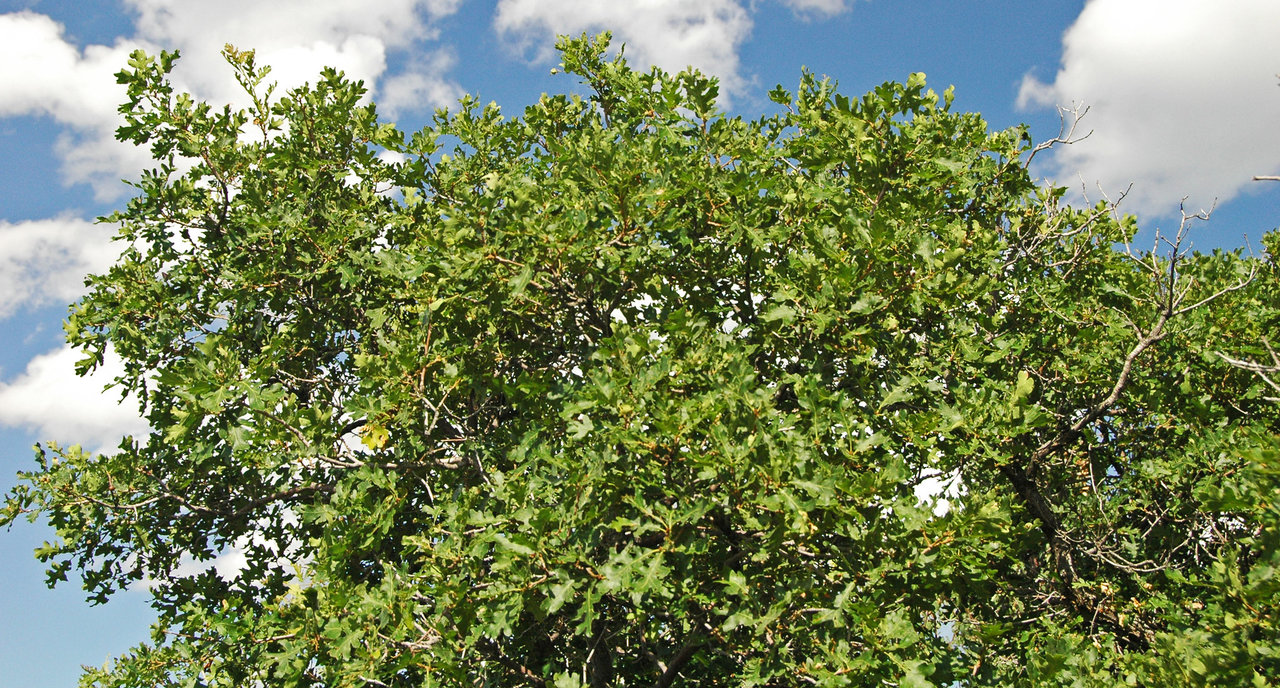
If you want to plant trees in your Denver yard, consider native trees. They have been growing in Colorado since before the first European settlers arrived, so they are adapted to Denver’s elevation and climate. Planting natives also attracts wildlife.
So, if you’re interested in a low-maintenance, biodiverse landscape, here are the five best native trees to plant in Denver.
Five Best Native Trees to Plant in Denver
1. Colorado Blue Spruce: Large and Strong
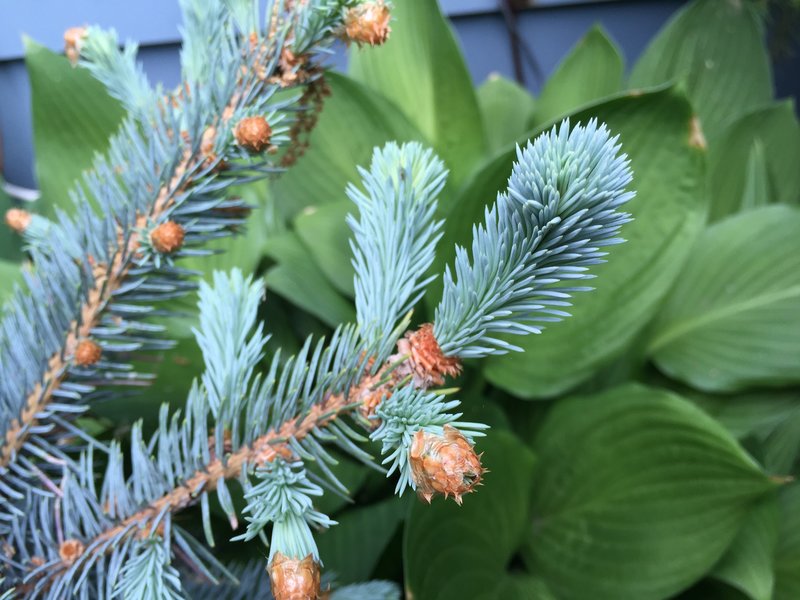
Photo Credit: Famartin / Wikimedia Commons / CC by SA 4.0
The Colorado blue spruce, Colorado’s state tree, is a great native species to plant in the Denver metro area. It was found growing high up in the Rocky Mountains in 1862, then spread quickly, becoming one of the most widely planted landscape trees.
Note: Denver sits in the USDA hardiness zones 5b-6a.
Scientific name: Picea pungens
Recommended altitude: 4,000-9,500 feet
Hardiness zones: 2-7a
Sun: Full sun to partial shade
Soil: Loam or clay, high organic material, well-draining soil
Mature size: 30-60 feet tall; 15-25 feet wide
Moisture requirements: Moderate to high
Foliage: Evergreen (green through year with little dropoff of leaves)
Descriptions
- Sports stiff branches that grow horizontal to the ground.
- Stiffly bristled needles come off the branches in all directions.
- Its needles are green to blue-green to silver-blue.
Concerns

- Keep it away from power lines. The Colorado blue spruce may grow 30 to 60 feet tall with a crown width of 15 to 25 feet. “As homes in the metro area get smaller, many cannot accommodate these large trees,” says Dr. James Klett of Colorado State University’s Extension office.
- It prefers moist areas. “The Colorado spruce also needs a little more moisture than other native trees,” Klett says. However, the state tree is the most tolerant to drought of the spruces.
- Burns fast when used as firewood, but is good for kindling
Advantages
- Some drought tolerance after establishment.
- Can resist strong winds during our rough winters.
- Grows in a variety of soil types including acidic, loamy, moist, sandy, well-drained and clay soils.
2. Gambel Oak: Small and Hardy
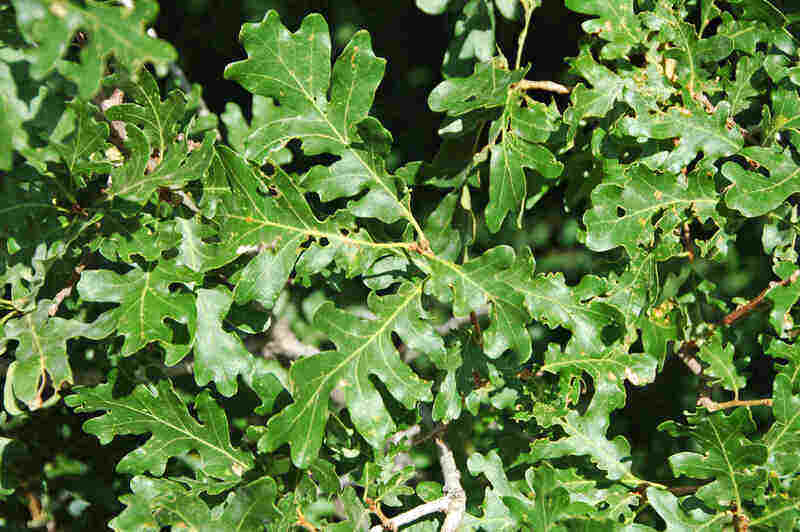
The Gambel Oak, also known as the Scrub Oak, is moving into urban areas as a popular tree for yards and parks, especially if electrical lines are a concern. “Though it’s a small tree, it’s a good choice for privacy and can withstand cold and drought,” Klett says.
Scientific name: Quercus gambelii
Recommended altitude: 4,000 – 8,500 feet
Hardiness zones: 3-9
Sun: Full sun
Soil: Tolerates rocky, alkaline soil
Mature size: 20-30 feet tall; 15 feet wide
Moisture requirements: Low to moderate
Foliage: Deciduous tree (color changes with the seasons and leaves fall off)
Descriptions
- Smaller than other oaks, peaking at 15 feet in height. A slow to moderate growth rate.
- Fall color is notable. Even one or two in a garden can splash red, orange, yellow and brown come the changing of the season.
- A deep, extensive root system, it rarely reproduces from acorns, instead generating sprouts from that root system.
- Fuzzy trichome hairs on the underside of its leaves enable the scrub oak to withstand intense sunlight and drought.
Concerns
- Scrub oaks send out prolific runners from lignotubers, which is why some homeowners have mixed opinions about planting them.
- Freezing can make the scrub oak toxic. Young foliage that has turned black during freezing can be extremely toxic.
- Consistent pruning is needed to keep the scrub oak from crowding other plants.
Advantages
- An excellent windbreak when aligned in a row.
- Resprouts after a fire or any other event that kills the parts that are above ground, something that not all tree species can do.
- A major food source for the Colorado hairstreak butterfly.
- The acorns are eaten by livestock and wildlife.
3. Limber Pine: Slow and Flexible
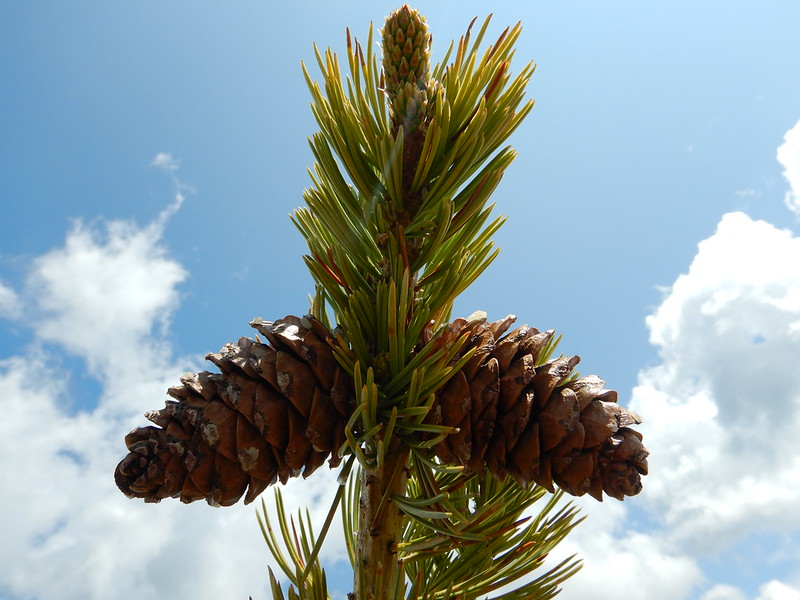
Photo Credit: Matt Lavin / Flickr / CC BY-SA 2.0
The limber pine is a slow-growing, medium-sized evergreen tree. This Colorado native is found throughout the West, spanning from southern Alberta and British Columbia to New Mexico.
Scientific name: Pinus flexilis
Recommended altitude: 4,000 – 10,00 feet
Hardiness zones: 4-7
Sun: Full sun
Soil: Tolerates a range of soils, from moist and well-draining to dry and rocky
Mature size: 30-50 feet tall; 25-40 feet wide
Moisture requirements: Low to moderate
Foliage: Evergreen (green through year with little dropoff of leaves)
Descriptions
- Also known as the Colorado white pine. An ornamental tree.
- Gets its name from the flexible branches found on juvenile trees.
- Soft, blue-green needles grow to 3.5 inches long and in bundles of five.
- Will reach 30- to 50-feet tall. Its crown is pyramid-shaped when young, eventually becoming flat-topped. A hardy tree.
Concerns
- Slow growth rate. Grows slower than many other evergreens.
- White pine blister rust is starting to spread through limber pine populations. It causes cankers that spread (sporulate) and will kill the tree. An outbreak in northwestern Montana left one-third of limber pine stands dead with 75% of the other trees infected.
- Air circulation around its canopy helps, so it should not be planted in tight groups.
Advantages
- Withstands salt and winterburn better than other evergreens, not losing as much of its moisture to the material used to de-ice roads or to the winter sun and winds.
- Drought-tolerant to a degree, especially after it has been established.
- Excellent windbreaks. Homeowners find the flexible branches can withstand high winds in summer and heavy snowfall in the winter.
- A food source for a variety of birds and squirrels. Seeds buried for later but forgotten become seedlings far from the parent tree
4. Wasatch Maple: Colorful and Tasty
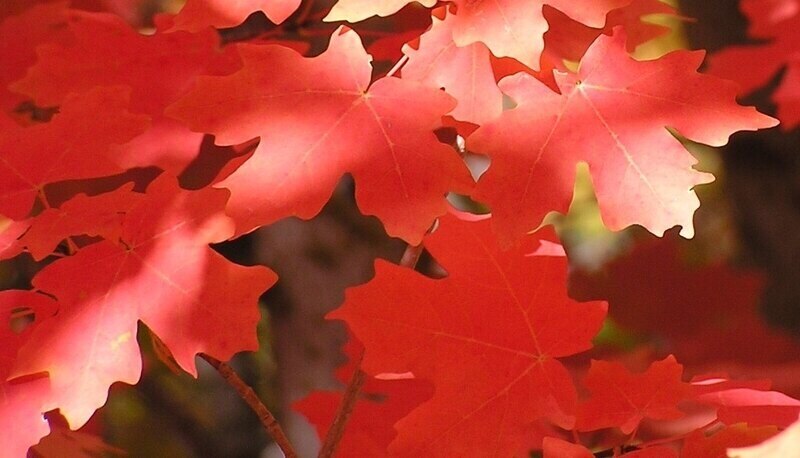
Photo Credit: Scott Catron / Wikimedia Commons / CC BY-SA 3.0
If you’re looking for some fall color in your yard, the Wasatch maple is an excellent choice. Also known as the canyon maple or the bigtooth maple, this tree produces foliage that rivals a sugar maple. In addition to its fall beauty, it’s tolerant of the cold, can handle a drought, and can even be tapped for sugar production.
Scientific name: Acer grandidentatum
Recommended altitude: 4,500 – 7,000 feet
Hardiness zones: 5-8
Sun: Full sun to partial shade
Soil: Silty loams are most common; textures range from medium to rocky
Mature size: 30-40 feet tall; 20-30 feet wide
Moisture requirements: Low to moderate
Foliage: Deciduous tree (color changes with the seasons and leaves fall off)
Descriptions
- Also known as the canyon maple or the bigtooth maple.
- Adapts well to different types of soil and moisture.
- Tooth-like leaves are dark green in the summer, changing in the fall to vivid yellow to red.
- Can provide a backdrop in a garden, especially one that is the subject to design and layout. Fall color is excellent.
Concerns
- A fairly slow growth rate. But mature trees will reach 30 to 40 feet tall and 10 inches in trunk diameter.
- Hard to find. The Wasatch maple is inconsistent at germination and is slow growing, so growers tend not to develop it.
- Vulnerable to dieback when transplanted, especially to urban areas.
Advantages
- Tolerant of the cold, the Wasatch maple is a hardy tree down to -30 degrees Fahrenheit.
- Can grow in semi-shade or no shade. It provides shade underneath, too. An ornamental tree.
- Will withstand a drought, let alone water restrictions.
- The sap is rich in sugar and can be made into a drink or concentrated into a syrup by boiling off the water. It is closely related to the sugar maple.
5. Ponderosa Pine: Huge and Thick
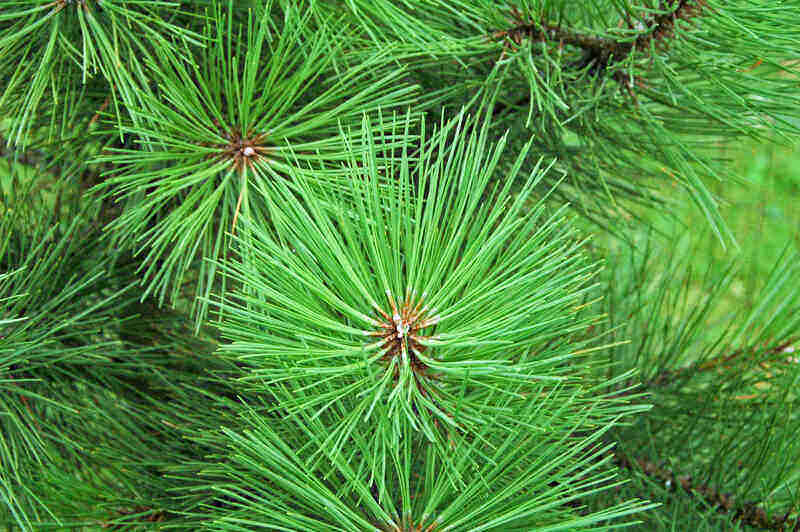
Photo Credit: James St. John / Flickr / CC BY 2.0
The ponderosa pine is one of the most widely distributed tree species in the West due to its high drought tolerance. Historically, Native Americans used the bark and resin for food and medicinal purposes. Today, ponderosa pine forests are valued for their role in livestock grazing, timber production, and as habitat for deer and wild animals.
Scientific name: Pinus ponderosa
Recommended altitude: 4,000 – 9,000 feet
Hardiness zones: 3 to 7a
Sun: Full sun
Soil: Clay, loam, or sand
Mature size: 60 to 100 feet tall; 25 to 30 feet wide
Moisture requirements: Low to moderate
Foliage: Evergreen (green through year with little dropoff of leaves)
Descriptions
- A vanilla or butterscotch scent, making it easy to identify and a favorite of hikers throughout the Front Range and Rocky Mountain region.
- Needles turn yellowish in the winter. Growing in bundles of three, the needles are 5 to 10 inches long.
- Grow best in full sun with deep, well-drained soils. Can adapt to a variety of growing conditions.
Concerns
- Too large for backyards. “This tree may be better suited to a corner lot or as a border to forested areas,” says Klett.
- Susceptible to pests and disease, especially when stressed from drought.
- Air pollution damages needles, causing mottling, noticeable loss, and vulnerability to bark beetle attack.
Advantages
- Thick bark that is also resistant to wildfires. Plus, it prunes its own limbs when mature, reducing the possibility of going up in flames.
- Grows to mammoth sizes, 60 to 100 feet tall with canopies spanning 25 to 30 feet.
- Need less nitrogen and phosphorus to produce their needles, so they can grow on infertile soils that may not be able to sustain other trees. A hardy tree.
When to Call a Professional: The Options
A lot of people enjoy working on their trees, but amateur tree pruning should be limited to small trees and lower branches. When it comes time to do pruning with a chainsaw, it is time for a professional. If you decide to hire a professional, expect to pay an average of $475 for a pro to trim your tree.
Likewise, if you want to plant trees in your yard, you should turn to a local arborist. They will know which trees to recommend for your location, which trees are wrong, and how to avoid problems with spacing, insects, and diseases.
FAQs: The Hardiness Scale and More
Denver falls into Zones 5b through 6a on the U.S. Department of Agriculture plant hardiness scale. Warmer areas of western, southwestern, and southeastern Colorado as well as Fort Collins are in Zone 6. Most of the Colorado Front Range falls into Zone 5. Mountain areas are Zone 4.
Colorado’s other major tree species include:
• Bristlecone pine
• Douglas fir
• Engelmann spruce
• Lodgepole pine
• Narrowleaf cottonwood
• Quaking aspen
• Piñon pine
• Plains cottonwood
• Rocky Mountain juniper
• Subalpine fir
• White fir
The lodgepole pine is the most common tree in Colorado, covering about 60 percent of all tree cover, with spruces and firs accounting for 23 percent.
Fast-growing trees along the Front Range include the cottonwood, catalpa, silver maple, blue spruce and white oak varietals, according to Colorado State University’s Forest Service. Crabapples bloom all over Denver and the Front Range in April and May and are spreading to elevations reaching 8,000 feet.
The white ash, especially the Autumn Purple variety that was once the choice of homeowners in Denver, is not recommended for planting in Colorado since the emergence of the emerald ash borer.
Hawthorn, piñon pine, and hackberry are some of the slowest growers, making them less popular for tree planting.
When considering the best choice for tree-planting in the Denver area, keep in mind the ones that are not recommended:
• Aspen
• Silver maple
• Russian-olive
• Tree-of-Heaven
• Tamarisk
• Willows
• White-Barked Birches
• Siberian elm
Japanese Maples can grow, but need protection from wind and large amounts of sun throughout the year. Kentucky Coffeetrees are pretty to look at, but the seeds and leaves are poisonous. Animals have died from drinking water into which the Kentucky Coffeetree seeds have fallen.
Crabapple trees need a good deal of tree care, including trimming on a regular basis, and should be fenced off from deer. The crabapple does provide red fall color.
The best dates for planting trees in the Denver area are from March 15 to June 15 and from September 1 to October 15.
Despite their names, the Saskatoon serviceberry and the Canada red select chokecherry are Colorado native plants, and both produce white flowers. Another variety of serviceberry, the known as the “Autumn Brilliance” is popular among homeowners for its vibrant orange-red addition to fall color.
Your Yard and Denver Native Trees
Choosing native trees for your Denver yard may limit your selection, but the benefits of planting natives outweigh the drawbacks. Consider the size of your landscape and contact a Denver landscaper for advice before choosing any of these five native trees for your Denver yard.
Main Image Credit: Quercus gambelii (Gambel oak) James St. John / Flickr / CC BY 2.0